A comprehensive overview of product packaging methods and leading practices. Discover packaging material choices and effective packaging strategies that will help your products stand out and create a memorable unboxing experience for your customers. This is a must-watch for e-commerce ventures, retailers, small businesses, and manufacturers who want to elevate their brand's packaging game. Start improving your packaging today with this helpful guide!
Packaging Guidelines:
Types of Rigid Boxes:
Premium finished boxes made from sturdy cardboard are commonly referred to as rigid boxes. Rigid boxes can help increase product and brand appeal by incorporating high end finishes, such as a fine velvet or silk fabric layer, to give your packaging and products a luxurious feel. Compared to regular folding cartons, rigid boxes offer a significantly higher level of safety and brand appeal.
There are many different types of rigid packaging boxes that cater to different product types and industries. Some of the more commonly used types are:
In order to provide required levels of strength and durability for a specific The appeal and appearance of rigid boxes can be is further enhanced by using additional packaging accessories including velvet bags, personalised ribbons, and foam inserts.
Levels of Packaging:
Packaging often plays a decisive role in product success. It is important to identify suitable materials and finishes when designing product packaging so that the end result aligns with the intended use. The level of packaging under consideration often dictates the ideal materials and finishes that need to be incorporated in the design and production processes. The three levels of packaging that are commonly referred to in relation to packaging design are:
Please contact our dedicated support team and they will help you in identifying appropriate materials and finishes for your product packaging project.
Types of Corrugated Fluting:
The term fluting refers to the part of a corrugated sheet or box that looks like a wave. Fluting is what provides higher stacking strength and durability to corrugated boxes. There are various types of fluting and the differences among them are typically described in terms of the number of flutes per linear foot and the height of the flute itself. Corrugated sheets manufactured from different types of fluting are commonly referred to as:
- A Flute
- B Flute
- C Flute
- E Flute
- F Flute
In order to provide required levels of strength and durability for a specific purpose, it is important that the appropriate type of corrugated sheet is used when manufacturing different types of corrugated packaging.
Corrugated Board Types:
Custom boxes manufactured from corrugated paperboard are referred to as corrugated boxes. Corrugated boxes are typically used for shipping or packaging products that require additional protection.
Corrugated paperboard is composed of rows of paper columns that are referred to as fluting along with a paper liner layer. The combination of the fluting and the liner layers makes corrugated board significantly stronger than ordinary cardboard. Different types of corrugation, providing varying degrees of protective capability, are typically referred to as:
Common types of corrugation, providing varying degrees of protective capability, are referred to as:
- Single Face Board
- Single Wall Board
- Double Wall Board
- Triple Wall Board
Measuring a bottle for product packaging:
Brand recognition and loyalty are essential to the growth of any business and Branded Packaging is an essential component of most branding strategies. In order to design great looking and functional product boxes, it is essential to have the correct measurements.
This video provides an overview of the steps required to calculate the correct size for your custom product packaging boxes. Please feel free to reach out to your dedicated account representative with any additional questions.
Measuring bottles for correct label sizes:
Providing well-designed product information is an integral part of the sales process. While including this information on product boxes is common, product labels offer an effective and more cost-efficient alternative. Custom product labels, that are placed on the product itself, can eliminate the need for external packaging in certain circumstances while also helping in improving brand recognition and customer loyalty.
Correct label dimensions are essential to designing a great label. This video provides an overview of the steps needed to calculate the correct size for your custom product labels. If you have any additional questions, please feel free to reach out to us.














